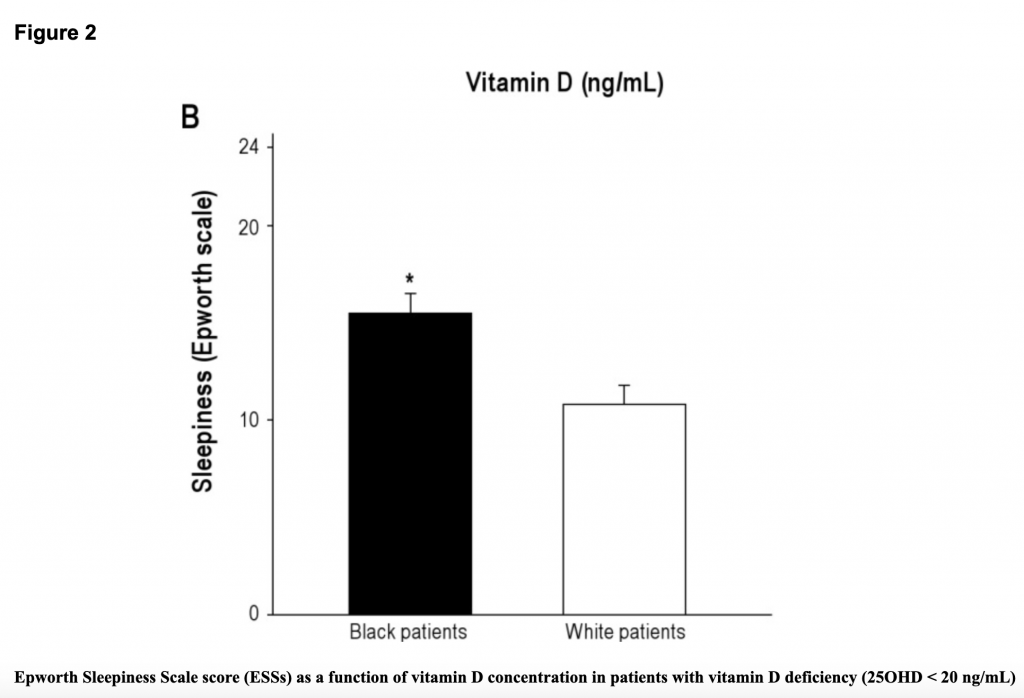Researchers at LSU’s Division of Sleep Medicine conducted a study to determine if there is a correlation between vitamin D deficiency (VitDd) and excessive daytime sleepiness (EDS).
Increasing evidence from clinical and basic research suggests that a suboptimal level of vitamin D disposes patients to the development of various diseases apart from the classical descriptions of bony demineralization. Low vitamin D levels are likely contributors to immune dysregulation as well as excessive daytime sleepiness mediated by components of inflammatory cascades.
In this study, the researchers expected to see that progressively 
Methods/ 81 sleep clinic patients who complained of sleep problems and nonspecific pain were evaluated. Serum 25-hydroxyvitamin D (25OHD) was measured, and sleepiness was determined using the Epworth Sleepiness Scale score ([ESSs] ESSs ≥ 10’ EDS).
Results for Daytime Sleepiness and Vitamin D
Researchers found that in patients without VitDd, sleepiness scores were inversely correlated with their vitamin D concentration. Among patients with VitDd, sleepiness was directly correlated with serum 25OHD levels in black people, but not among white people. See Figure 2.
The research suggests that VitDd may contribute to symptoms of sleepiness via known sleep regulating substances, as well as
- The association with upregulation of NFkB, which functions as a master switch for inflammation and a trigger of the cellular inflammatory cascade resulting from intermittent hypoxia associated with obstructive sleep apnea (OSA),
- This is also responsible for the regulation of substances that exert homeostatic sleep pressure, such as prostaglandin D2.
- Therefore, VitDd may not only be a cofactor for the development of cardiovascular morbidity associated with OSA, but may also play a role in the pathogenesis of EDS associated with the disease.
The researchers note that the study was not designed to identify mechanisms. “Low 25OHD may cause daytime impairment, but it is also possible that patients with severe sleepiness may exhibit behaviors that increase the likelihood of low 25OHD.” As an example, sun avoidance may lessen the biosynthesis of vitamin D, which is related to direct sunlight exposure.
The researchers note that the study was not designed to identify mechanisms. They write: “Low 25OHD may cause daytime impairment, but it is also possible that patients with severe sleepiness may exhibit behaviors that increase the likelihood of low 25OHD.”
As an example, sun avoidance may lessen the biosynthesis of vitamin D, which is related to direct sunlight exposure. “In this view, however, a linear inverse relationship would be expected for all patients, with higher ESS scores correlated with lower 25OHD values. Our discovery of a direct relationship among those with a greater burden of deficiency (i.e., blacks with 25OHD < 20 ng/mL) does not support the notion of sleepiness-related behavior provoking deficiency. Further studies would help clarify the biologic underpinnings relating 25OHD to sleepiness,” the researchers note.
Conclusion/ This is the first study to demonstrate a significant relationship between sleepiness and vitamin D. Though ESSs and 25OHD are related, the relationship is complex; the presence of VitDd changes the nature of this relationship compared to subjects without VitDd; among subjects with VitDd, the relationship between ESSs and 25OHD is markedly affected by race.
Source: McCarty DE, et al. Vitamin D, Race, and Excessive Daytime Sleepiness. J Clin Sleep Med. Dec 15, 2012; 8(6): 693-697






